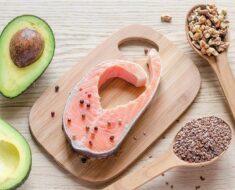Hydrophilic interaction chromatography (HILIC) is a liquid chromatography technique that is used to separate moderate to highly hydrophilic and polar compounds based on their retention on a hydrophilic stationary phase versus the hydrophilic aqueous polar organic mobile phase.
 Ropisme | Shutterstock
Ropisme | Shutterstock
Principles of HILIC
Ionic and ionizable compounds typically rely on separation by ion exchange chromatography (IC) or ion pairing reversed-phase chromatography (IP-RPLC).
In traditional Reverse-phase Liquid Chromatography (RPLC), polar, hydrophilic and charged compounds are preferentially retained on the column. This is in contrast to the retention mechanism in HILIC, which relies on the partitioning of a compound between the aqueous surface layer of the hydrophilic stationary phase and the organic, hydrophilic compartment of the mobile phase.
Secondary forces, such as dipole-dipole, electrostatic, and hydrogen bonding interactions influence this partition, resulting in retention of the compound on the stationary phase or elution in the mobile phase.
A complete understanding of the mechanism that underlies HILIC and the basis of selectivity and retention is still to be understood. Improvement in the selection of a stationary phase based on composition is one area that is being developed.
Understanding the characteristics of the compounds being separated and their compatibility with various stationary phases will further optimize separation.
HILIC as a complementary technique
HILIC is a complementary technique and can be used in conjunction with other techniques to increase the efficiency of separation.
One distinguishing characteristic of HILIC is that the constituents of a mixture are eluted in the order of most hydrophilic to least hydrophilic. This contrasts with the order seen in standard reverse-phase chromatography, where elution occurs in the order of least to most hydrophilic. As such, HILIC effectively retains hydrophilic compounds which are poorly retained in reversed-phase LC.
HILIC is highly compatible with mass spectrometry (MS), particularly with electrospray ionization (ESI) interfaces which precede MS. The high polar organic solvent component of the HILIC mobile phase increases the efficiency of ionization in the ESI process.
Ionization provides the basis of ESI, which relies on charging the compound of interest in the gas phase and analysis by mass spectrometry. HILIC–MS can, therefore, provide a highly sensitive, quantitative analysis of a wide range of complex solutions containing polar compounds.
HILIC applications are particularly central in the chemical and biochemical research fields where polar compounds with a low-to-medium molecular mass are the subjects of analysis. These include peptides, carbohydrates, antibiotics, drugs, amino acids, nucleotides, nucleosides, and pesticides.
HILIC–MS is a complementary analytical tool to RPLC–MS which provides poorer separation of hydrophilic components. HILIC-MS, however, allows these hydrophilic constituents to be separated and subsequently detected at high resolution. Combining the two techniques thus increases analytical capabilities for hydrophilic compounds that are poorly retained in RPLC.
HILIC is expected to advance rapidly, particularly in the fields of column chemistry and particle physics.
Applications of HILIC in biomedicine
HILIC has a wide range of biomedical applications, including:
- Chemical engineering;
- Biochemistry – to separate polar peptides following digestion of proteins to determine protein function and stability;
- Pharmacology – to analyze polar drugs and metabolites, including proteins, peptides and antibodies;
- Agricultural – to analyze plant extract polar components, such as those in phenolic acids, carbohydrates, peptides, and flavonoids;
- Food Industry – to detect food contaminants, marine biotoxins, small polar compounds and biogenic amines (this produced by organisms).
Sources
- https://onlinelibrary.wiley.com/doi/pdf/10.1002/9781118495247.ch8
- www.chromatographyonline.com/hilic-and-its-applications-biotechnology-part-i
- assets.thermofisher.com/…/TG-21003-HILIC-Separations-TG21003-EN.pdf
- https://www.researchgate.net/publication/322090869
Further Reading
- All Chromatography Content
- Chromatography Overview
- Gas Chromatography-Mass Spectrometry (GC-MS) Applications
- High Performance Liquid Chromatography (HPLC)
- Liquid Chromatography-Mass Spectrometry (LC-MS) Applications
Last Updated: Feb 26, 2019

Written by
Hidaya Aliouche
Hidaya is a science communications enthusiast who has recently graduated and is embarking on a career in the science and medical copywriting. She has a B.Sc. in Biochemistry from The University of Manchester. She is passionate about writing and is particularly interested in microbiology, immunology, and biochemistry.
Source: Read Full Article





